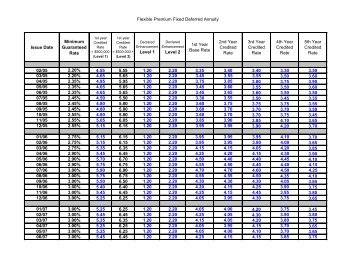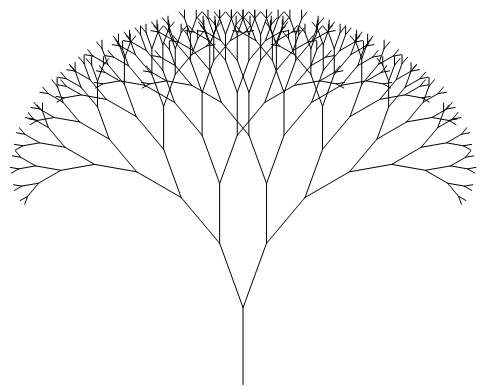Contents:


For example, Add New Event adds an event to the Calendar app, Create Playlist creates a playlist in the Music app and Save to Photo Album adds photos to a specified album in the Photos app. Some share actions are used for posting content to social media services. Other share actions are used for logging data, including Log Health Sample and Log Workout. Because many actions use other apps on your device, you can also view actions sorted according to the app they use.
Inside the variable editor, you can choose a value to compare. For example, for a Weather Conditions variable you can choose the High temperature. For more information, see Adjust variables in Shortcuts on iPhone or iPad. Show Alert is especially useful for displaying information on Apple Watch. For example, you can create a shortcut that determines sunrise and sunset times and displays an alert that includes a summary.
About get actions in Shortcuts on iPhone or iPad
To learn more about the flow of inputs and outputs, see Intro to how shortcuts work on Mac. Creates a Numbers document with the selected properties of devices. Returns a list of ECID identifiers of the devices connected to this Mac.
- For example, you can use the Get Latest Photos action to grab the five latest images from a photo album, then follow that action with the Choose from List action.
- Use the If action to set up a shortcut that checks for certain conditions and operates differently depending on which condition is met.
- Move the pointer over an action in the list, then click to display a description of the action.
- Erases the content and settings on the devices whose identifiers are passed to this action as input.
- The Choose from Menu action lets you decide what a shortcut should do when it’s run.
Returns a list of ECID identifiers to connected devices chosen by the user from a displayed list. Arranging variables in a List action is similar to manually adding variables one at a time using the Add to Variable action. By default, all Quick Actions workflows appear in Finder windows, the Services menu and the Touch Bar.
For example, a what are the top operational risks for banks loop that contains a Vibrate Device action set to Repeat 3 Times vibrates your iOS device three times when the shortcut is run. You can create automated workflows for others to use when configuring devices. This approach is useful when you want to configure a large number of devices physically separated by a significant distance. You create a workflow using Automator, test it locally, and when you have it functioning the way you want, you can attach it to an email and send it to others.
Action Links appear as optional buttons and links placed to the right of the business website button in the row of buttons located toward the top of the Place Card. Typically, these are the fourth button from the left or part of the More button. Using the Apple Business Connect API, you can create Action Links. These allow direct customer experiences within your organization’s website or app, or those of a trusted Third-Party Partner (such as OpenTable, Booking.com, Instacart, and more). For example, the List action might work for a simple menu of choices for filling in a text field or as a series of album titles to choose from. To access Quick Actions from the Touch Bar, you must add the Quick Actions button.
Control the flow of actions in Shortcuts on iPhone or iPad
To exit the menu without performing a gesture, tap anywhere outside the menu. IPhone performs a selected action when you hold the cursor still on a screen element or an area of the screen. Use the If action to set up a shortcut that checks for certain conditions and operates differently depending on which condition is met. If actions give you the flexibility to set up different paths that your actions can take depending on conditions that are known only when the shortcut runs. You can also collapse or expand all actions in a workflow by holding down the Option key and clicking the arrow in the title bar of an action.
For example, if the last action is a Contacts action, the app suggests actions such as Call or FaceTime. In a shortcut that ends with a Get Current Song action, the list suggests actions such as Add to Playlist or Get Details of Music. Some actions accept only input, create only output, or pass input through as output without changing it. Open Control Center, then touch and hold an item like Camera or the brightness control to see options. In Photos, touch and hold an image to preview it and see a list of options. To return to the previous menu, tap the arrow in the center of the menu.
iPhone 15 Pro’s mute switch might be like the Apple Watch Ultra’s … – BGR
iPhone 15 Pro’s mute switch might be like the Apple Watch Ultra’s ….
Posted: Fri, 14 Apr 2023 07:00:00 GMT [source]
In the shortcut editor, click to display a list of action categories. For information on adding shortcuts to Siri, see Run suggested shortcuts on iPhone or iPad and Use Siri to run shortcuts with your voice. Tap an action category in the list, then tap for a specific action. When typing, touch and hold the Space bar with one finger to turn your keyboard into a trackpad. You can also double-click the .action file itself to open it and install it in Automator.
View all available actions for an app
Therefore, actions can take different paths depending on conditions that are determined when the shortcut runs. Although Shortcuts doesn’t offer an action to repeatedly run a group of actions forever, you can emulate this behaviour by using the Run Shortcut action. The Run Shortcut action allows you to run one shortcut inside of another. Configure the Run Shortcut action to run the same shortcut that it’s contained within, and the shortcut runs from start to finish repeatedly until you stop the shortcut. All repeat loops offer a special variable called Repeat Index, which is used to keep track of the current iteration of the loop. The Repeat Index variable contains the number of times a loop has been repeated so far, starting at 1 for the first iteration of the loop and incrementing by one each time.
If the description doesn’t appear, click the Show Description View button in the bottom-left corner of the window. The Repeat action and the Repeat with Each action allow you to run a group of actions in a shortcut multiple times in a row. Create your workflow, test it, then save it as either a workflow or an app. See Allowing apps and websites to link to your content on the Apple Developer website.

When Select Multiple is turned on, the Select All Initially option becomes available. Turn on Select All Initially to have all the items in the list selected by default then, when you run the shortcut, manually deselect the items you don’t want to add. The Choose from List action can display rich previews in the menu of options when the shortcut is run. For example, you can use the Get Latest Photos action to grab the five latest images from a photo album, then follow that action with the Choose from List action.
Set up Dwell Control
Actions inside a repeat loop run from top to bottom in the loop, and then jump back to the top, repeating the actions as many times as necessary. You can also retrieve multiple items from the list by providing a range of indexes. For example, if you pass a list of six items into the Get Item from List action and set the index to 3, the third item in the list is retrieved at runtime. If you pass a list of six items into the Get Item from List action and set the index to a range of 3 to 6, the third, fourth, fifth and sixth items in the list are retrieved at runtime. If you use the Choose from List action with the Dictionary action, all the keys in the dictionary are displayed when you click “Add new item”.
You can connect Bluetooth and USB assistive pointer devices, such as trackpads, joysticks, and mouse devices. The last action to produce output in the If case or Otherwise case passes its content through the End If marker as output (available to retrieve as an “If Result” Magic Variable). This means that the last action in each path of the If action affects the output of the action as a whole.
These are typically “get” actions, like Get Upcoming Events, Get Current Song or Select Photos, all of which simply retrieve data. An action that doesn’t take input appears in the list of actions separated from the previous action, without a centre connecting line. Actions that aren’t compatible appear in the list without a connecting line, to show that the actions won’t work together. For example, the Get Current Location action can’t provide an output for the Create Playlist action because Create Playlist requires a song item, not a map location.
Erases the content and settings on the devices whose identifiers are passed to this action as input. The Add Photos button appears and, when tapped, adds the photo a customer selected to their Photos app. Use the Get Item from List action to automatically narrow down a list of items when the shortcut is run.
In the shortcut editor, tap to display a list of action categories. For example, the Set Appearance action switches between light and dark mode between actions. In the following example, the Select Photos action retrieves data from the Photos app and requires no input from another action. The data retrieved by the Select Photos action is input into the Convert Image action.
How To Use Spatial Audio Features On Your Apple TV – SlashGear
How To Use Spatial Audio Features On Your Apple TV.
Posted: Sat, 29 Apr 2023 23:00:00 GMT [source]
It is then available from Finder windows, the Services menu or the Touch Bar . In the right sidebar of the shortcut editor, move the pointer over an action in the list, then click and select Add as Favourite. Learn more in Use another app’s URL scheme in Shortcuts on iPhone or iPad. As you build a shortcut, the Shortcuts app predicts what actions you may want to use next.
In the If marker, you can configure the Input and Condition parameters. (The content of this variable will be used for the If comparison.) Then tap Condition to choose a condition. (The available conditions are dependent on the type of input.) Text inputs have conditions such as “is”, “is not” and “contains”.
When the shortcut is run, a menu of 15 Calendar events appears, prompting you to choose one. In the Automator app on your Mac, click the action in the Library. You can view the details of a single action in the Results area of the action. This allows you to see what is happening when you run a workflow, and helps in troubleshooting any problems that may occur. Automator also includes a View Results action that displays the results of the previous action.
Often, actions that contain variables don’t connect directly to the next action in the shortcut. Instead, they pass their output to another action later in the shortcut. When you’re learning to work with Repeat and Repeat with Each, it’s helpful to test the results that are produced after the End Repeat marker to ensure that the content is what you intended. Place a Quick Look action after the End Repeat marker to preview the items that are output by the repeat loop.
You can also place a Show Alert action after the End Repeat marker and insert a Repeat Results Magic Variable in the message box to display text that has been output by the loop. At the end of the repeat loop, the output passed to the End Repeat marker during each iteration is gathered together and passed as the output of the Repeat with Each action as a whole. For each iteration of a repeat loop, the last action’s output is gathered into a list, and that list becomes the output of the Repeat action as a whole. The actions run in order , and when the last action is reached, the shortcut loops back to the first action, then runs again . Restores a single, specified backup to the devices whose identifiers are passed to this action as input.

Although some actions require no input or output, others have very specific input requirements, such as a specific type of file from a previous action. For example, an action that requires a graphic file for input can only follow an action in the workflow that has a graphic file as output. Adds the selected profile files to the devices whose identifiers are passed to this action as input. Adds the selected apps on the devices whose identifiers are passed to this action as input. Adds the selected document files on the devices whose identifiers are passed to this action as input. By default at runtime, Choose from List prompts you to choose a single item, but you can turn on Select Multiple to allow multiple items to be selected when the action runs.

You can https://1investing.in/ the Touch Bar to show only Quick Actions, or have Quick Actions appear only when you press the Function key. The most straightforward sharing actions are Share and Share with Extensions. On the Lock Screen, touch and hold a notification to respond to it.
Using the Apple Business Connect API, you can add standard actions and action links for your customers. Each menu option in the Choose from Menu action has a corresponding marker — a tag below the Choose from Menu action in the shortcut editor. Each marker represents a different pathway the shortcut may take at that point. Place the actions that you want the shortcut to perform under the marker for a specific menu choice. ” When you run the shortcut, choosing “Nice to meet you” passes the text string “It was great meeting you today!